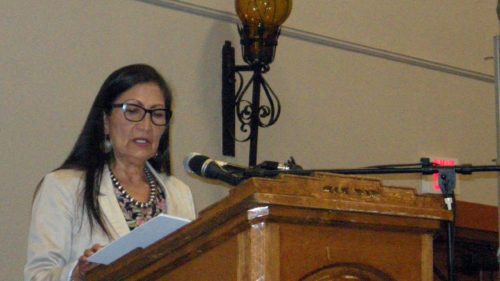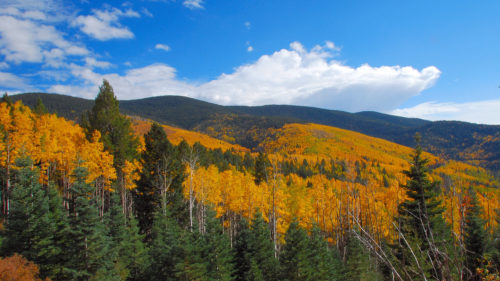The protests began in April with a few members of the Hunkpapa Lakota (Standing Rock Sioux), whose reservation is downstream from where the 1,200 miles pipeline is designed to cross the Missouri River. The tribe was concerned that a leak would contaminate their drinking water and that construction would harm sacred sites in the area. Since then the protest and its motivations have become more diverse.
Wednesday’s protests here in Albuquerque included the now famous refrain of “Water is Life” that developed with the Standing Rock protesters, but more widely discussed honoring Native treaties and environmental justice issues, some protesters carried signs calling for the end of fossil fuel use. What started on the North Dakota prairies has spread around the world with protests in London and Tokyo matching the one here in Albuquerque and a formal presentation by the Lakota Nation to the U.N. in Geneva.
What makes this protest different is its historical context. The Dakota Access Pipeline is NOT an isolated incident, it’s part of a much larger story. In 1868 the Lakota Nations were promised a reservation that comprised all of western South Dakota–the next year gold was discovered in the Black Hills and the Sioux reservation was broken up into smaller parts so that the U.S. could exploit the new discovery. In 1946, the Army Corps of Engineers started damming the Missouri River. The dams flooded Native people out of their homes and forced another move. Today, the Dakota Access Pipeline is planned to lie just one mile north of the Standing Rock reservation the potential threat to water is real. Since 2009, the annual number of significant accidents on oil and petroleum pipelines has shot up by almost 60 percent. The fact that the pipeline would also disturb sacred sites only adds insult to injury.
Court documents revealed that the original path of the pipeline was scheduled to run through Bismark. The citizens of Bismark complained about the potential threat to their water–the pipeline was moved. The citizens of Standing Rock complained about the potential threat to their water–they were attacked by dogs.
No one debates whether the United States should seek energy independence. But why must Native nations continue to bear the burden of that independence? From the hydropower of the 1940s to the pipelines of today, through the uranium mines of the WWII and the coal that lies under the Dine’tah, Native people have been on the wrong side of this nation’s energy development since this nation started developing energy. NMWF believes that all Americans should benefit from progress, but that it should not come at the expense of one group for the benefit of another. Their is a middle-ground–a way to gain energy independence and value the land, its wildlife, and its people.
By Todd Leahy, Deputy Director at the New Mexico Wildlife Federation. Todd has a PhD in American Indian History



